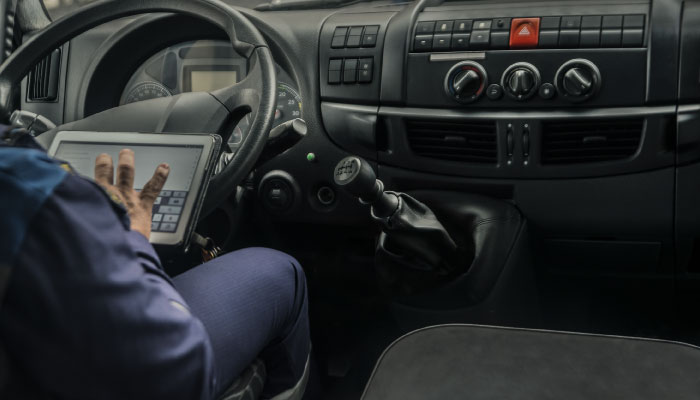The new electronic logging device (ELD) rules are here—and they are strict. So strict, in fact, that many of the issues previously facing the trucking industry are now magnified because of ELD’s inflexibility. Two of the biggest of those problems are excessive dock time and truck parking.
Trucking industry pro Mark Dixon addresses the ELD rules and these exacerbated problems in a live webinar for Audio Solutionz, “The ELD Issues: Excessive Dock Time and Truck Parking: Solutions and Alternatives.” Dixon addresses how the new ELD mandate has changed the way trucking companies do business and presents both excessive dock time and truck parking solutions. Most of all, he looks at how to alleviate the negative impact of the new rulings.
Driving as ‘Personal Conveyance’
ELD rules have changed a lot, especially regarding wait times. The mandate now forces drivers to record unloading and loading on line 4 of their log—on-duty non-driving, notes FreightWaves: “Even though they’re not driving but resting in their cab, the burdensome and punitive 14-hour clock keeps ticking, reducing [drivers’] opportunity to work and earn a living.”
One new ELD feature is use of a rig for “personal conveyance.” For example: The driver has already logged a full day, but the truck needs to be moved to a different bay or used to drive home. Luckily, neither of those movements count against a driver’s available hours, Joe DeLorenzo, director of the Federal Motor Carrier Safety Administration’s Office of Enforcement and Compliance, told ELD Comply.
Of course, “personal conveyance” is not new, but no one paid much attention to it before ELDs made it a measurable stat.
Beware: Drivers citing “personal conveyance” had better have good reason, DeLorenzo warned. Overdrive Online recounted the story of a trucker who waited overnight to unload only to be ushered along by police. He drove to a parking spot to sleep and called it “personal conveyance”—technically a false log violation since the truck was loaded.
Yard Moves: What Are They and How Can They Be Used
A yard move, said ELD provider BigRoad, describes “those moments when you’re moving your truck but you’re not really ‘driving.’” Note that the time you spend in this mode will not cut into your available drive time though you’ll still be “on-duty.” BigRoad allows yard moves of up to five miles with no max speed.
On the other hand, personal conveyance, per the FMCSA, can be used when drivers are:
- Relieved from work and all work responsibilities
- Driving empty
- Driving home or to work
- Traveling short distances, e.g., to a hotel or restaurant
“Note: If you use your commercial motor vehicle (CMV) for transportation home, but you’re called by your employing carrier and then dispatched from home, this is considered on-duty from the time you leave home,” BigRoad added.
Potential Benefit: Reduced Detention Time
For all its headaches, ELD may force a solution to a common sore spot among truckers: being jerked around at the dock.
With ELDs tracking practically everything and drivers having to explain just how they spent their time, hours wasted waiting for a bay to open or forklifts to roll will be highlighted, FreightWaves said.
“The ELD mandate will ultimately force shippers and receivers hands,” FreightWaves opined. “Get trucks on and off docks quicker or be prepared to pay detention verified by electronic log data which records truck activity down to the minute.”
These negative impacts can be alleviated, said Dixon: Drivers and trucking companies just need to understand how to be proactive to make the changes as painless, and positive, as possible.




